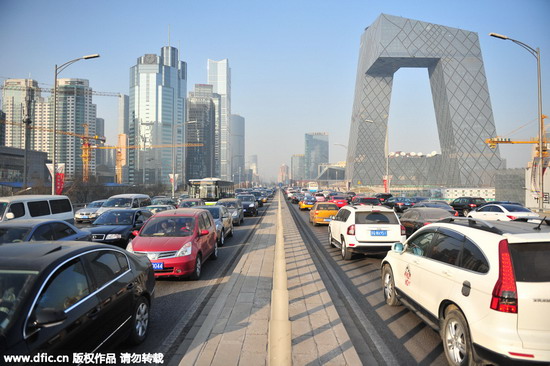 |
|
Masses of vehicles move slowly on a highway during a traffic jam in Beijing, China. [Photo/IC]
|
It is no surprise to hear that the Beijing municipal government is discussing the possibility of a congestion charging regime similar to the one in London, as such measures increasingly need to be considered to reduce the traffic on the capital's roads and improve its air quality.
Beijing is home to many millions of cars, and the figure is growing by some 300,000 a year. The only solution to this challenge is the continuous development of the city's public transport system, along the lines already implemented by the authorities, but with the addition of a congestion charge that will ration road space by price, so that the marginal cost of an additional trip by a car owner will be paramount in their minds.
The introduction of the congestion charge in London in 2002 by the then Mayor Ken Livingstone was a brave move indeed but he had clearly been given a mandate to do it from Londoners in the 2000 Mayoral contest. It almost immediately reduced the number of vehicles entering central London by 70,000 a day, producing real benefits for the city, not only by cutting the pollutants produced by vehicle emissions but also by improving public transport capacity and performance, and reducing road traffic casualties.














